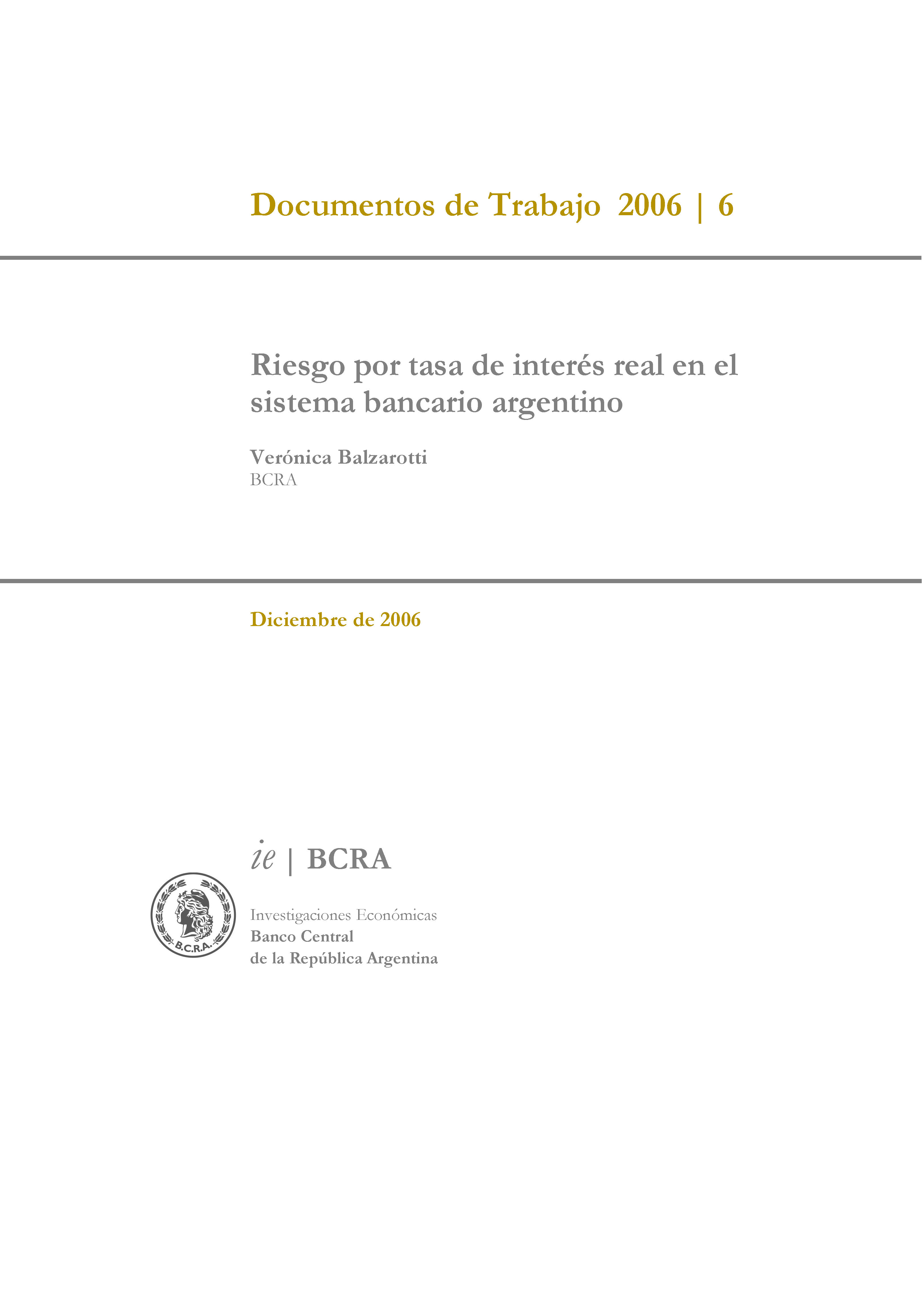Real Interest Rate Risk in the Argentine Banking System: A Measuring Model
Working papers | 2006 | N 6
Keywords:
Financial risk management, Interest rate risk, Real interest rate, Indexing, Monte Carlo simulation, Value at risk, Stochastic behavior of the interest rate, Stochastic behavior of inflation, BanksAbstract
The exposure of the Argentine banking system to real interest rate changes is material and discourages long term credit. Quantification of this risk would help to manage it and may promote new credit, although it is not an easy job, especially in emerging markets. This paper proposes a Value at Risk (VaR) approach that uses Monte Carlo simulations. We estimate time series models (autoregressive with mean reversion and jumps) of the behavior of bank deposits and of the rate of inflation, attempting to keep them tractable for a local practitioner. Results show that short term funded banks would face more risk from inflation indexed claims than from nominal claims (and would therefore apply a greater premium for that risk, according to a risk adjusted return on equity approach, RAROC). This can be linked to the discussion on the “puzzle” of the relatively low use of indexation. The extent of the risk and the fact that the sign of the gap is the same across banks does not contribute to the development of derivative contracts. Results may also indicate distortions introduced by capital requirement regulations and accounting rules. A generalization of the methodology may be explored within the framework of Pillar 2 of Basel II.
JEL classification: C22, E37, E47, G12, G21, G28, G32


